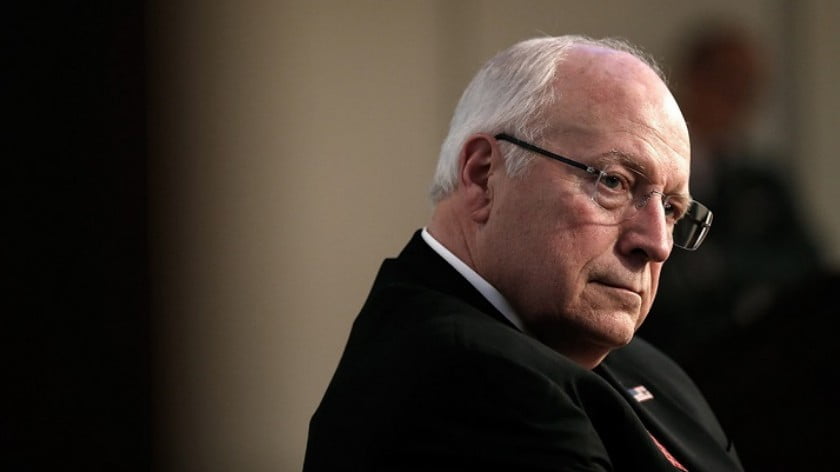Pakistan’s ASGA Strategy for the Afro-Pacific
Reconceptualizing the Indian Ocean as an African one can help to craft creative strategies for maximizing Pakistan’s strategic significance in the emerging Multipolar World Order through a reinvigorated naval strategy that capitalizes on China-Pakistan Economic Corridor’s “Global South” connectivity potential via the Arabian Sea and Gulf of Aden (ASGA).
There’s been a lot of talk lately about the so-called “Indo-Pacific”, which the author himself has admittedly used in a geographic sense to describe both oceans but which has recently taken on subtle political connotations when employed by Western and Mainstream Media commentators. These voices have started to trumpet the “Indo-Pacific” term in order to provocatively suggest that India is a rising global superpower that is in some way or another capable of “containing” China, thereby “justifying” the 100-year-long military-strategic partnership that the US is unprecedentedly building with it for this purpose. The irony, however, is that the Indian Ocean is named after India, which in turn received its name because of the Indus River that’s nowadays located mostly in Pakistan. Moreover, the “Indus” isn’t even an indigenous term, as the locals refer to it as “Sindh”, ergo the Pakistani province of the same name.
From The Indian Ocean To The African One
All etymological issues aside, the case could equally – and in some cases, even more convincingly – be made for calling the “Indian Ocean” (or whatever other name is used to refer to it in the context of the subcontinent’s civilization[s]) the African Ocean. Using the Indian subcontinent as the basis for describing this body of water is only relevant insomuch as one takes into account the spread of its historic civilization across mainland and insular Southeast Asia in this ocean’s eastern half, but this Indo-centric view ignores the similarly large spread of African civilization across this ocean’s western half even though it mostly occurred as a result of slavery and indentured servitude. Conveniently left out of the global narrative because of the liberal zeitgeist of “political correctness”, Arab slave traders were responsible for spreading African civilization into the Mideast and as far away as Persia, thereby giving it a larger geographic scope than its Indian counterpart.
Another argument in favor of conceptualizing the Indian Ocean as the African Ocean is that it would be more representative of the many countries that are expected to form the basis of China’s “South-South” engagement in the emerging Multipolar World Order. Not only does the vast majority of China’s trade traverse through this body of water, but it will inevitably begin to be increasingly concentrated on the African landmass as the People’s Republic pioneers new trade routes and develops new marketplaces as destinations for its excess production. In fact, one of the driving motivations behind China’s One Belt One Road (OBOR) global vision of New Silk Road connectivity is to stave off socio-economic challenges caused by the country’s overproduction crisis long enough for Beijing to transition its structural model from a secondary to a tertiary one.

ASGA
The China-Pakistan Economic Corridor (CPEC) indispensably provides the People’s Republic with reliable non-Malacca overland access to the African Ocean and further afield to this neologism’s namesake continent, which thus ensures the security of China’s trade routes with the “Global South” by avoiding any unnecessary entanglements in the ever-complicated geostrategic environments of the South China Sea, Strait of Malacca, and Bay of Bengal. Instead of transiting the long way through these regional waters and potentially risking disruption by the US and its allied Indo-Japanese navies, China could use CPEC’s terminal port of Gwadar as its base of trading operations for greatly shortening its Sea Lines Of Communication (SLOC) with Africa by focusing more on strengthening connectivity via the more easily defensible Arabian Sea and Gulf of Aden (ASGA).
The logic behind this is that Ethiopia, which is the second-most populous country in Africa and the world’s fastest-growing economy, is China’s premier partner in the continent, and Beijing just built the Djibouti-Addis Ababa railway as a de-facto Horn of African Silk Road for efficiently accessing this landlocked but rising African Great Power. Seeing as how Ethiopian-Chinese trade will in all likelihood begin to transit across CPEC en route to the People’s Republic, it makes sense for the Pakistani Navy to begin proactively safeguarding the ASGA SLOC between Gwadar and Djibouti together with the Chinese. Not only could this allow Pakistan to enhance its economic and political presence in Africa via “CPEC diplomacy”, especially in the event that it could also acquire a base in Djibouti or at the very least end up using the Chinese one there, but it could give Islamabad’s strategists the necessary experience for crafting a more comprehensive connectivity policy with the African Ocean’s similar OBOR-linked ports in Kenya’s Mombasa and Tanzania’s Dar es Salaam.
Ethiopia’s Strategic Edge
As an added benefit, Pakistan might even be able to one day “balance” the divergent interests of its traditional Arab partners in the Horn of Africa if it’s successful in establishing excellent working relations with Ethiopia, nearly half the population of which is Muslim and presumably receptive to Islamabad’s soft power sway. Ethiopia’s ambitious plan to build a massive dam on the Blue Nile has roiled Egypt, which considers this to be a threat to its national security, and Cairo has accordingly taken steps to put pressure on Addis Ababa. One of these has been that Egypt’s close UAE ally exploited the disastrous Saudi-led War on Yemen to establish military bases in the neighboring country of Eritrea and the internationally unrecognized polity of “Somaliland” along Ethiopia’s northeastern periphery, which not only allows Abu Dhabi to influence the SLOC on both sides of the Bab el Mandeb, but to crucially exert influence into the Horn of African hinterland against Addis Ababa in the event that Cairo decides to strike the landlocked country.
Complicating matters, however, is that Qatar has taken advantage of the “Gulf Cold War” to enter into a fast-moving rapprochement with Ethiopia in order to spite Egypt and its monarchic allies, even though Doha and Addis Ababa had at one point broken off diplomatic relations a little more a decade ago over Ethiopia’s concern that the thumb-shaped country was supporting instability within its borders. Ethiopia also blocked Al Jazeera in 2013 as well. Nevertheless, both sides saw an opportunity to put the past behind them and accelerate relations out of their shared interest in countering Cairo and its regional “containment” policy against both of them. Bearing in mind that Pakistan is on great terms with all of the Arab players involved in this, it could gain unparalleled strategic leverage with them if it improved its relations with Ethiopia in accordance with the ASGA plan and placed itself in a position to “balance” all the parties involved. Through these means, Pakistan could become a crucial force for stability in China’s most important continental region for OBOR investments at the pivotal maritime crossroads of Afro-Eurasian trade.

Piercing India’s Missile Defense Shield
Last but certainly not least, Pakistan’s ASGA strategy for the Afro-Pacific could provide the much-needed impetus for directing more funds towards the country’s naval modernization program, relying on the publicly plausible reason of protecting the SLOC in the Arabian Sean-Gulf of Aden region but also clandestinely improving Pakistan’s nuclear triad through advancements in submarine-launched ballistic missile (SLBM) technology. It’s no secret that India is investing in missile defense capabilities in order to neutralize the credibility of Pakistan’s nuclear second-strike deterrent and therefore gain a hegemonic advantage over it by perpetually keeping Pakistan in a state of strategic blackmail. This state of affairs would expectedly be exploited in order to force the South Asian state into submission and could therefore potentially pose an existential threat to CPEC – and by extent, to China too – under this scenario.
The most surefire way to offset India’s plans is to develop Pakistan’s SLBM program in order to ensure that Islamabad can always defend itself in the event that New Delhi launches a nuclear first strike against it, which would thus preserve the balance of power between these two rivals and accordingly diminish the prospects of war between them, however much this is to the US’ anti-CPEC chagrin. For this reason, China should support Pakistan’s ASGA strategy in both its public and clandestine forms, encouraging it to play a more proactive role in safeguarding the SLOC between Gwadar and Djibouti (and eventually, Gwadar and the East African ports of Mombasa and Dar es Salaam) so that there’s a justifiable reason for increasing naval investments in order to secretly fund a more robust SLBM program for piercing India’s missile defense shield.
Concluding Thoughts
One of the fundamentals of Hybrid War is language and the subconscious ideas that are transmitted through select words, which is why it’s so important to use the most accurate terms in conveying a given side’s intentions and correspondingly countering those of their adversaries. The recent trend in talking about the “Indo-Pacific” is a perfect case in point because the terminology no longer refers to the innocent idea of both oceans but has been perverted to carry unipolar geostrategic connotations about “containing” China. The only suitable recourse in this case is to introduce another word to more accurately convey what some analysts mean when talking about this body of water and drawing attention to its importance to China’s global trade routes, particularly as it relates to Africa’s growing role in the Multipolar World Order. Therefore, it’s necessary to reconceptualize the “Indian Ocean” as the African Ocean and then work on popularizing this term in the wider strategic discourse.
Following that, it’s then easier to understand why CPEC’s terminal port of Gwadar should be paired with Djibouti, Mombasa, and Dar es Salaam in facilitating “Global South” trade between China and Africa, the SLOC of which could be protected by the Pakistani Navy out of the self-interest that Islamabad also has in securing its own trade routes with the continent. Furthermore, Pakistan stands to gain immense strategic benefits if it can clinch a comprehensive and fast-moving partnership with Ethiopia that puts it in a position to “balance” relations between the Horn of African country and Egypt, as well as between the two rival states’ feuding Gulf allies. Should it work out as planned, then Pakistan would acquire an unparalleled importance to its partners that it could later leverage on a bilateral basis to advance its pecuniary, military, and other interests with each of them.
Altogether, the success of Pakistan’s ASGA strategy would also allow the country to justify more funding for its naval forces, which could provide a publicly plausible cover for investing in the SLBM technology that’s going to become absolutely necessary for piercing India’s missile defense shield in the next decade. It’s not to say that Pakistan can’t develop this program on its own and without ASGA, but just that appearances are very important and that it might be more acceptable to its domestic and international audiences if it does so under the pretense of investing in its surface convoys and trade ships, both of which would inevitably be empowered by more funding but which additionally serve to disguise the redirection of some financial assets to SLBM-related projects. One way or another, Pakistan is going to have to counter India’s efforts to neutralize its nuclear second-strike capabilities, and if it can do so while also profiting in a commercial and geostrategic sense, then it will have discovered the ultimate win-win policy for carrying out this urgent task.
By Andrew Korybko
Source: Oriental Review







